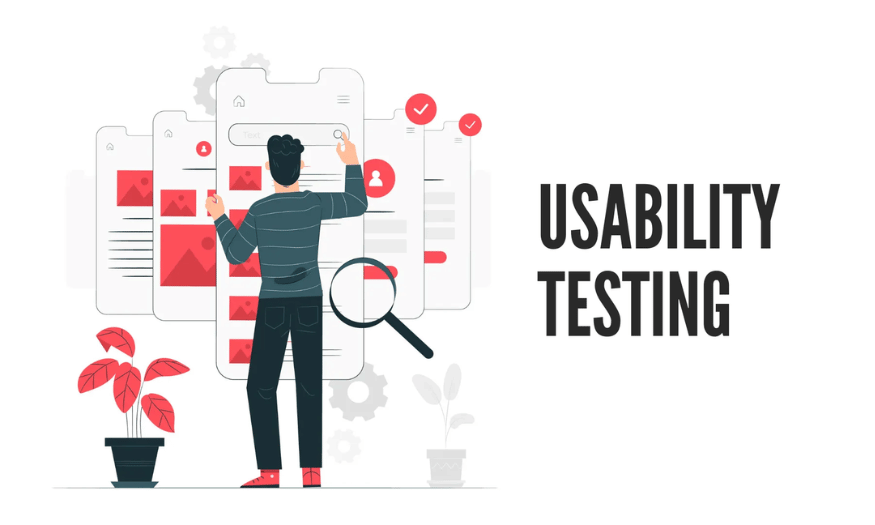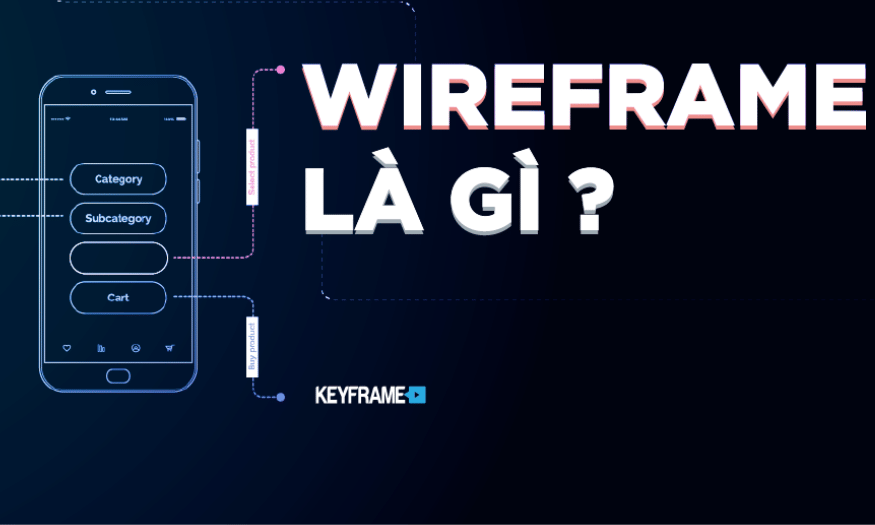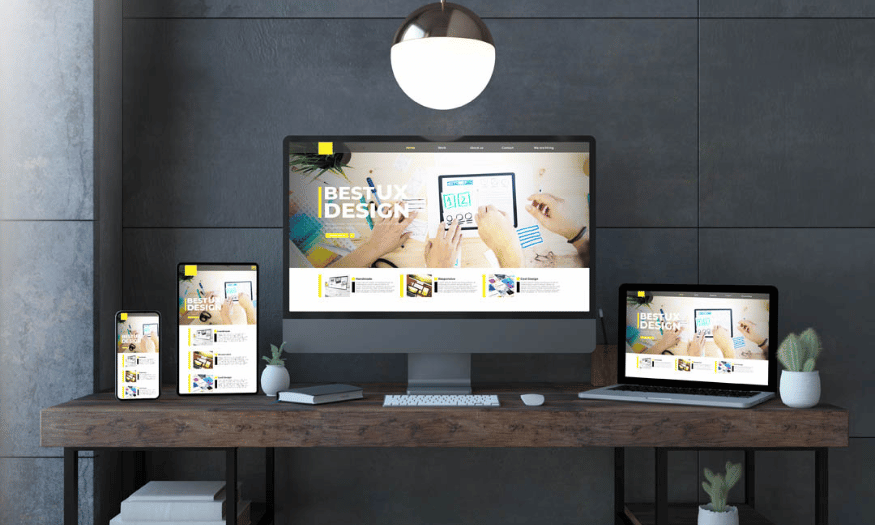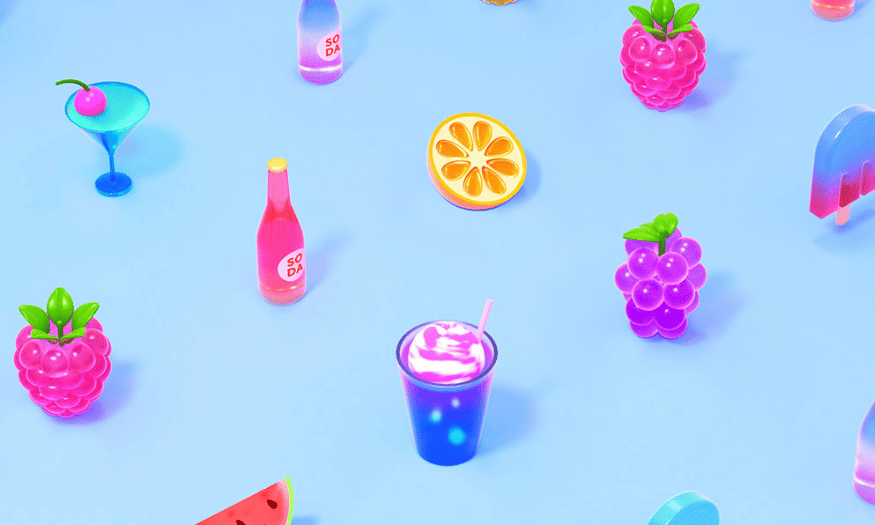Best Selling Products
Comprehensive UX Design Process
Nội dung
- 1. What is UX design?
- 2. UX design helps deliver better experiences
- 3. 4 Important points in UX design
- 3.1. User experience goes hand in hand with the brand
- 3.2. Business goals are part of the UX design process
- 3.3. UX goes hand in hand with Usability
- 3.4. UX is about empathizing with customers
- 4. UX design process
- 4.1 Step #1: Understand
- 4.2 Step #2: UX Research
- 4.3 Step #3: Build a user flow
- 4.4 Step #4: Rational information architecture
- 4.5 Step #5: Create Wireframes
- 4.6 Step #6: Prototyping and Mockups
- 4.7 Step #7: Testing
- 5. Conclusion
The user experience design process (UX Process) is a series of important steps to create a product that is not only useful but also easy to use, bringing satisfaction to users. In the context of increasingly developing technology, UX design has become an indispensable factor in the success of any product, from mobile applications to websites. This process includes many stages such as user research, ideation, prototyping and testing. Each stage plays a key role, contributing to optimizing the user experience and increasing engagement with the product.

The user experience design process (UX Process) is a series of important steps to create a product that is not only useful but also easy to use, bringing satisfaction to users. In the context of increasingly developing technology, UX design has become an indispensable factor in the success of any product, from mobile applications to websites. This process includes many stages such as user research, ideation, prototyping and testing. Each stage plays a key role, contributing to optimizing the user experience and increasing interaction with the product. In this article, Sadesign will delve into each step in the comprehensive UX design process, providing an overview and details of the methods and tools needed to build an excellent user experience.
1. What is UX design?
In simple terms, UX design, or user experience design, is the process of creating a positive experience for users when interacting with a product, website or application. This process is not just about creating beautiful sketches or interfaces. Instead, UX design determines the overall way users move through pages, how information is presented and how they interact with elements within the product. The ultimate goal is to provide a seamless, understandable experience that meets the needs of users, thereby guiding the business goals of the enterprise.
To do this, UX designers need to consider many different aspects. They ask important questions such as: Is the user flow smooth and intuitive? Do the colors and placement of buttons really attract users or create doubts? Or do they need to provide more details in the checkout process to improve conversion rates? Every design decision must be based on a clear understanding of the characteristics of the target market and grasp the psychology of users, thereby combining with business goals to create the most suitable products.
.png)
2. UX design helps deliver better experiences
User Experience Design (UX Design) plays a vital role in shaping the overall look and feel of a website or application. It not only guides users but also deeply impacts their emotions and thoughts. Every image, content, structure, and navigation is carefully combined to create a memorable user experience. When users can easily find the information they are looking for, they complete their goals and are likely to return to the product in the future.
To achieve this, UX designers need to understand the motivations of end users. They ask questions like: Why do users decide to visit a website? What specific information are they looking for? And what solutions do they have to the problems they are facing? From this information, designers can adjust and optimize the design to meet user expectations in the simplest and most effective way. More importantly, UX design must not only serve the interests of users but also serve business goals, helping to drive conversion and user engagement.
UX design uses a variety of elements, from navigation elements and buttons to calls-to-action (CTAs) and natural navigation elements. These elements not only move users through a design, but also motivate them to complete desired actions, such as filling out information, clicking a purchase button, or starting a conversation. Because UX design often goes hand-in-hand with user interface (UI) design, any discussion of user experience must address the details of the UI, from typography and button appearance to size and imagery. The marriage of UX and UI is key to creating great user experiences.
.png)
3. 4 Important points in UX design
3.1. User experience goes hand in hand with the brand
Branding and user experience (UX) have a symbiotic relationship where one cannot thrive without the other. An established brand with a strong reputation can easily be damaged if they run a website or app with a poor user experience. Conversely, a startup can quickly build credibility if they have a product with a great user experience. Therefore, both brand and user experience rely on user perception, and both need to be developed in tandem for sustainable success.
When starting the UX design process, designers need to keep a close eye on the company’s brand and how it is communicated in the design. This means investing in a professional logo and other brand identity elements early on. Consistency in UX design not only reinforces the brand, but also creates a consistent user experience, which increases brand loyalty and trust.
3.2. Business goals are part of the UX design process
An effective UX design process cannot be separated from the business goals of the enterprise. Whether designing a new website or redesigning an existing product, everything must be aimed at achieving the strategic goals set by the enterprise. The content and functionality of the website must be properly combined to not only create a good user experience but also promote brand development.
This means that UX designers need to not only think creatively, but also have a deep understanding of the market, business goals, and marketing strategies of the company. By mastering these elements, they can create products that not only attract users but also contribute to the long-term success of the company. This is why business goals should always be considered an essential part of the UX design process.
.png)
3.3. UX goes hand in hand with Usability
User Experience (UX) and Usability are two inseparable concepts in product design. UX is not just about creating a beautiful experience, but also ensuring that users can interact and use the product easily and effectively. A reasonable design combining UX and Usability will help users have a smooth experience flow, without encountering any obstacles.
Usability involves three main factors: Who, What, and When. Designers need to understand their users, what content they need, and how they will interact with the product at each stage. A usable product will not only help users complete their tasks, but also make them feel satisfied and comfortable throughout the experience.
3.4. UX is about empathizing with customers
To create a great user experience, UX designers need to put themselves in the shoes of the end user. This means they need to understand the motivations, needs, and pain points that users are experiencing. By looking at a website through the eyes of the user, designers can predict the best ways for users to navigate and interact with it.
Collecting and analyzing data from multiple sources is crucial to this process. Designers need to understand how different pages connect to each other, how to navigate from page to page, and the overall user journey. From there, they can design experiences that not only meet needs but also motivate users to complete their goals in the most efficient way. Empathy with customers is key to creating memorable experiences that add value to the product.
4. UX design process
In the journey to creating great products, the user experience (UX) design process plays a decisive role. At Malu, we understand that effective UX design is not just about creating an attractive interface but also serving a specific business goal. Although the standard UX design process usually consists of only 5 steps, we have expanded it into 7 more detailed steps, making it easier for you to grasp and apply in practice.
4.1 Step #1: Understand
Before embarking on any design project, it is important to first have a deep understanding of two core elements: the business and the project requirements. As the saying goes, “If you have four hours to chop down a tree, spend the first three sharpening the axe.” This is especially true in UX design, where understanding the business problem and the user pain points will help you build a viable and effective design strategy.
To start, answer these key questions: What is the biggest problem your business faces? What are your users looking for? And how can you solve that problem? Having a clear picture of the challenges your customers face will help you determine the direction your design should take. At the same time, understanding your brand’s values and mission will help you ensure that your design not only looks good but also reflects your brand identity, thereby reinforcing user trust.
4.2 Step #2: UX Research
UX research is an essential step in the design process because it helps you better understand your users and the journey they are on. Instead of guessing at what your users want and need, rely on real data to make decisions. Gathering information through methods like surveys, interviews, and A/B testing will give you a comprehensive view of what your users really need.
Don’t think of user research as something that only needs to be done at the beginning. In fact, consumer behavior and expectations can change over time, requiring you to constantly update and adjust your design. A website that wowed users five years ago may no longer be impressive. Therefore, user research should be ongoing, helping you stay on top of new trends and ensuring that your product remains relevant and engaging.
(1).png)
4.3 Step #3: Build a user flow
Once you’ve gathered information from your research, the next step is to create user flows. This is an important tool that helps you clearly visualize the steps your users will take when interacting with your product. A user flow is more than just a diagram; it’s a detailed guide to how users will move from your landing page to other parts of your product.
Having a clear path for your users to take will help you structure your site properly. You can use sketching tools like FlowMapp or Whimsical to create visual user flows, or just use pen and paper. This will not only help you visualize, but will also help your team work together more smoothly.
4.4 Step #4: Rational information architecture
The human brain tends to seek order over chaos. Therefore, good information architecture is key to creating a good user experience. You need to arrange the elements on your website in a way that users can easily understand and navigate. Information architecture not only helps users find the information they need, but also guides them through the next steps in a natural way.
To create an effective information architecture, you should start by identifying the content that needs to tell your brand story. Then, categorize that content and create a clear map that shows how ideas and content blocks connect to each other. A good information architecture not only improves the user experience but also contributes to your website’s SEO optimization.
4.5 Step #5: Create Wireframes
Wireframes are the next step in the UX design process where you start to bring your ideas to life. A wireframe is a detailed plan for each website, showing the structure and layout without getting too into the aesthetic details. It helps you determine the placement of elements like images, text, and buttons, creating a clear guide for the design team.
A quality wireframe is more than just a drawing; it is a powerful communication tool within the team. By presenting the wireframe, all team members can discuss the structure of the website and make necessary adjustments before moving on to the detailed design phase. This not only saves time but also reduces risk during the product development process.
.png)
4.6 Step #6: Prototyping and Mockups
Once you have completed your wireframes, the next step is to create prototypes and mockups. Prototypes are the closest version of your final product, allowing users to interact and experience it before it is officially released. Mockups, on the other hand, focus on the visual and aesthetic aspects of your design. They give you a clear idea of how your product will appear to your users.
Developing prototypes not only helps you get early feedback, but also allows you to make necessary adjustments before the product is officially launched. Remember, a good prototype will include all the key components and interactions, from CTA buttons to animations, to give the user the most realistic experience possible.
4.7 Step #7: Testing
Usability testing is the final but not least important step in the UX design process. You need to get the product into the hands of real users so they can experience it and provide feedback. This is where you can directly observe how users interact with the product, identify existing problems and find ways to improve it.
During testing, give participants specific tasks you want them to perform, such as searching for a product or completing a checkout process. The feedback you get will give you insight into how well your design is working and help you make adjustments before your product goes live. Usability testing should be ongoing, not just early on, but throughout the entire product development process, to ensure that you’re meeting your users’ expectations.
.png)
5. Conclusion
In conclusion, the UX design process is not just a technical task but also an art that combines creativity and analysis. From user research to product testing, each step requires attention and meticulousness to ensure that the final product meets the needs and desires of users. Applying a comprehensive UX design process will help businesses create products that not only attract but also retain users for a long time. Investing in UX design is investing in the future of the product and the sustainable success of the business.












































